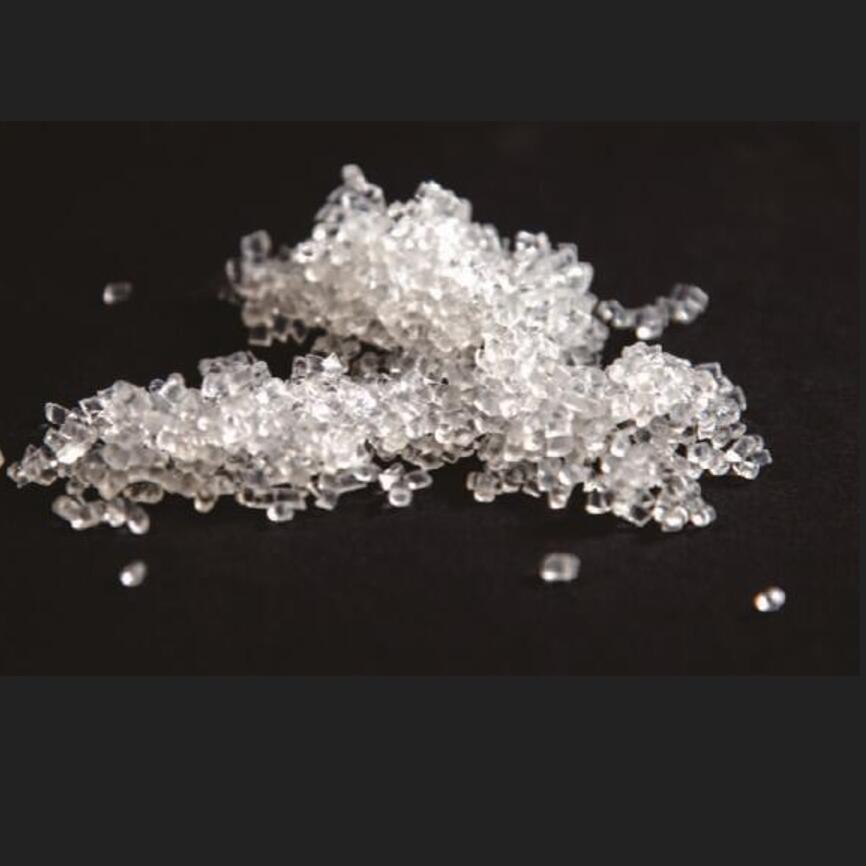Chemical Name:ion exchange resin
CAS Number:12627-85-9
Synonyms:cation exchange resin, anion exchange resin,perfluorosulfonic acid ion exchange resin,ionomer resin,
Appearance:polymer
Application:for the ion exchange and the production of ion exchange membrane
Month Capacity:30000 kgs
Adsorption selection:
Ion exchange resins have different affinities for different ions in solution and are selective for their adsorption. There are general rules for the strength of various ions exchanged and adsorbed by resin. The main rules are as follows:
1, adsorption of cations
High-valence ions are usually preferentially adsorbed, and among the same-valent ions, the ions with larger diameters are more strongly adsorbed. Some cations are adsorbed in the following order:
Fe3+> Al3+> Pb2+> Ca2+> Mg2+> K+> Na+> H+
2, the adsorption of anions
The general order of adsorption of inorganic acid radicals by strongly basic anion resins is:
SO42-> NO3-> Cl-> HCO3-> OH-
The general order of adsorption of anions by weakly basic anion resins is as follows:
OH-> citrate-> SO42-> tartrate-> oxalate-> PO43-> NO2-> Cl-> CH3COO-> HCO3-
3, Adsorption of colored substances
Sugar liquid decolorization often uses strong basic anion resin, which has strong adsorption to pseudo-melanin (reducing sugar and amino acid reaction product) and alkaline decomposition products of reducing sugar, while the adsorption of caramel color is weak. This is thought to be due to the fact that the first two are usually negatively charged, while caramel has a weak charge.
Generally, resins with a high degree of crosslinking are more selective for ions, and resins with macroporous structures are less selective than gel-type resins. This selectivity is larger in dilute solutions and smaller in concentrated solutions.
Ion exchange resin types:
1. Strong acid cation resin
This type of resin contains a large number of strong acid groups, such as sulfonic acid group -SO3H, which is easy to dissociate H+ in solution, so it is strongly acidic. After the resin dissociates, the negatively charged groups contained in the body, such as SO32-, can adsorb and bind other cations in the solution. These two reactions exchange H+ in the resin with cations in the solution.
2. Weak acid cation resin
These resins contain weak acid groups, such as carboxyl-COOH, which can dissociate H+ in water and become acidic. The remaining negatively charged groups after resin dissociation, such as R-COO- (R is a hydrocarbon group), can be adsorbed and combined with other cations in the solution, resulting in cation exchange. The acidity or dissociation of this resin is weak, and it is difficult to dissociate and perform ion exchange at low pH.
3. Strong base anion resin
This type of resin contains strong basic groups, such as quaternary amine group (also known as quaternary amine group)-NR3OH (R is a hydrocarbon group), which can dissociate OH- in water and show strong basicity. The positively charged groups of this resin can adsorb and combine with anions in the solution, resulting in anion exchange. This resin is highly dissociative and works well at various pHs. It is regenerated with a strong base such as NaOH.
4. Weakly basic anion resin
These resins contain weakly basic groups, such as primary (also known as primary)-NH2, secondary (secondary)-NHR or tertiary (tertiary)-NRR´, They can dissociate OH- in water and are weakly alkaline. The positively charged groups of this resin can adsorb and combine with anions in the solution, resulting in anion exchange. This resin in most cases adsorbs the entire other acid molecules in solution. It can only work under neutral or acidic conditions (such as pH=1~9). It can be regenerated with Na2CO3 and NH4OH.
Application:
1. Water treatment
The water treatment industry has a large demand for ion exchange resins, accounting for about 90% of the output of ion exchange resins, which are used for the removal of various anions and cations in water. At present, the largest consumption of ion exchange resin is used in pure water treatment in thermal power plants, followed by atomic energy, semiconductor, and electronics industries.
2. Food industry
Ion exchange resins can be used in sugar, monosodium glutamate, alcohol refining, biological products and other industrial devices. For example, high fructose syrup is produced by extracting starch from corn, and then hydrolysis to produce glucose and fructose, and then ion exchange treatment to generate high fructose syrup. The consumption of ion exchange resins in the food industry is second only to water treatment.
3. Pharmaceutical industry
The ion exchange resin in the pharmaceutical industry plays an important role in the development of a new generation of antibiotics and the quality improvement of the original antibiotics. The successful development of streptomycin is a prominent example. In recent years, there are also researches in the aspect of traditional Chinese medicine.
4. Synthetic chemistry and petrochemical industry
In organic synthesis, acids and bases are commonly used as catalysts for esterification, hydrolysis, transesterification, hydration and other reactions. The above-mentioned reaction can also be carried out by using ion exchange resin instead of inorganic acid and base, and has more advantages. For example, the resin can be used repeatedly, the product can be easily separated, the reactor will not be corroded, the environment will not be polluted, and the reaction can be easily controlled.
The preparation of methyl tertiary butyl ether (MTBE) is to use macroporous ion exchange resin as a catalyst, which is formed by the reaction of isobutylene and methanol, replacing the original tetraethyl lead that can cause serious pollution to the environment.
5. Environmental protection
Ion exchange resins have been used in many environmental protection issues of great concern. At present, many aqueous or non-aqueous solutions contain toxic ionic or non-ionic substances, which can be recycled using resins. Such as removal of metal ions in electroplating waste liquid, recovery of useful substances in film production waste liquid, etc.
6. Hydrometallurgy and others
Ion exchange resins can separate, enrich, purify uranium and extract rare earth elements and precious metals from depleted uranium ore.


